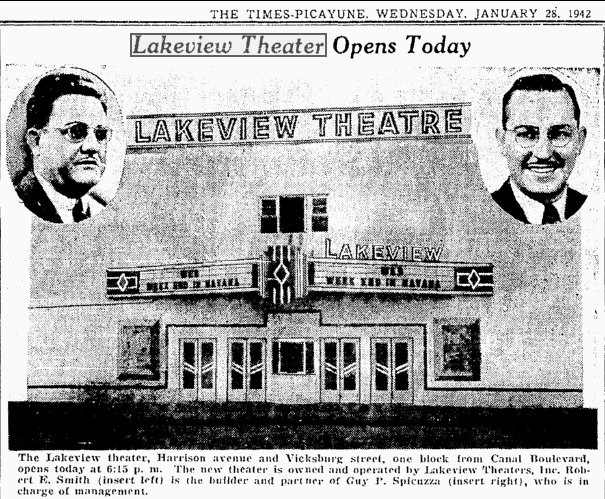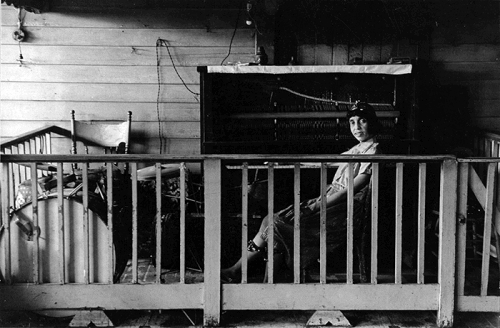|
Today in New Orleans History |
|
|
January 28


 Lakeview Theater Opens With 700 seats and a parking lot able to accommodate 300 cars, the Lakeview Theater became the first
movie house in Lakeview when it first opened its doors on January 28, 1942 at 6:16 P.M. to feature Alice Faye and John Payne
in "Week-End in Havana". The 20th Century Fox Technicolor film also starred Carmen Miranda, and Cesar Romero
and included the tunes "The Man with the Lollipop", "Romance and Rhumba", "Tropical Magic",
The Nango", and "Week-End in Havana". Also showing that evening was the movie "Welcome the Stranger"
and the latest newsreel. Located at the corner of Harrison Avenue and Vicksburg Street (one block from Canal Boulevard),
it was built by contractor Robert E. Smith who was the owner/partner of Guy P. Spicuzza who managed the theater. Draperies
and rugs were furnished by D.H. Holmes. Adult tickets sold for 25 cents. Children were admitted for 11 cents.
The management promised a policy of four program changes per week. "Sweet Emma" Barret Dies In 1947,
she accepted a steady job at a local club, Happy Landing, but it was her 1961 recording debut, with her own album
in the Riverside Records New Orleans: The Living Legends series, that brought her recognition from beyond the Crescent
City. Although most of the songs on the album were instrumentals, others featured vocals by Barrett that the liner notes described
as her first recordings as a vocalist. She was nicknamed Bell Gal because she wore a red skull cap and garters
with Christmas bells that jingled in time with her music. She was featured on the cover of Glamour magazine and
written up in publications on both sides of the Atlantic. When the Preservation Hall Jazz Band began to "hit the
road", she took it on international tours. Barrett toured in the United States as well, including a stint at Disneyland
in 1963. Despite the popular exposure she received at concerts and overseas appearances, Barrett continued to feel
most comfortable in her native New Orleans, especially the French Quarter. In 1963, on her album The Bell Gal And Her
Dixieland Boys Music, Barrett sings on four of the eight songs and heads two overlapping groups. While she is joined
throughout by banjoist Emanuel Sayles, bassist Placide Adams, and drummer Paul Barbarin, four songs feature trumpeter Alvin
Alcorn, trombonist Jim Robinson and clarinetist Louis Cottrell, Jr.; the remaining four numbers have trumpeter Don Albert,
trombonist Frog Joseph and clarinetist Raymond Burke. Overall, this set gives listeners a good sampling of the sound of New
Orleans jazz circa 1963 and is one of the few recordings of Barrett mostly without the regular members of what would become
the Preservation Hall Jazz Band (Robinson and Sayles excepted). The Preservation Hall Jazz Band made a brief appearance in the 1965 film, The Cincinnati Kid, which featured Barrett
as vocalist and pianist for the band and included a close-up of her. In 1967, she suffered a stroke that paralyzed
her left side, but she continued to work and occasionally, to record, until her death in 1983. From http://en.wikipedia.org/wiki/Sweet_Emma_Barrett She
is pictured here at Luthjen's Bar, 2533 Marais Street, during the late 1950s. Photo by Lee Friedlander. Hear
Sweet Emma:
 

To receive an update for each day in New Orleans
history, join our facebook page
- Today in New Orleans History
The World War II Liberty ship Linn Boyd was launched on January 28, 1944 by Delta Shipbuilding
Company.
|
|
|

To receive an update for each day in New Orleans history,
join our facebook page - Today in New
Orleans History.
Analytics |

 "Sweet Emma" Barrett, born on March 25, 1897 in
"Sweet Emma" Barrett, born on March 25, 1897 in 
